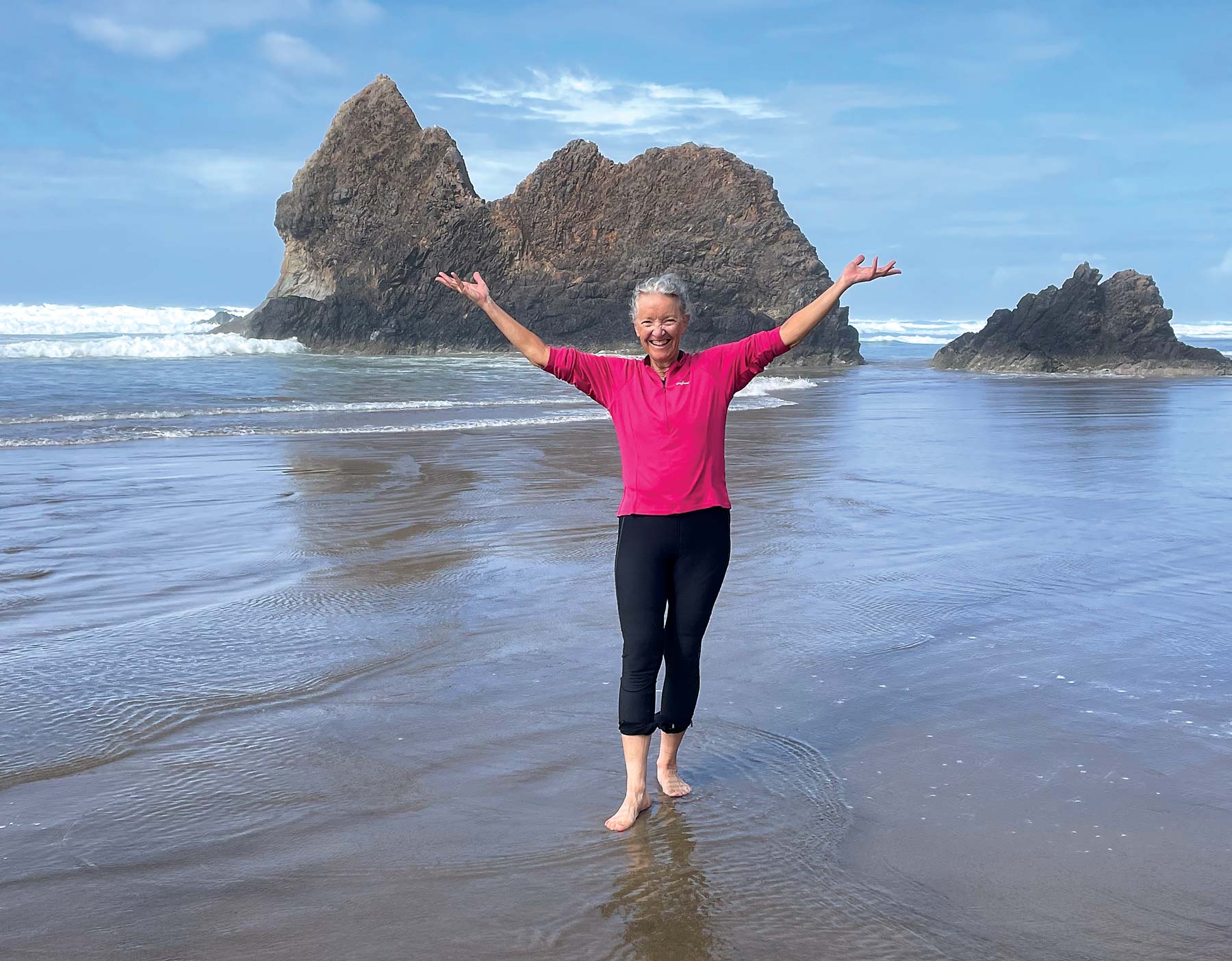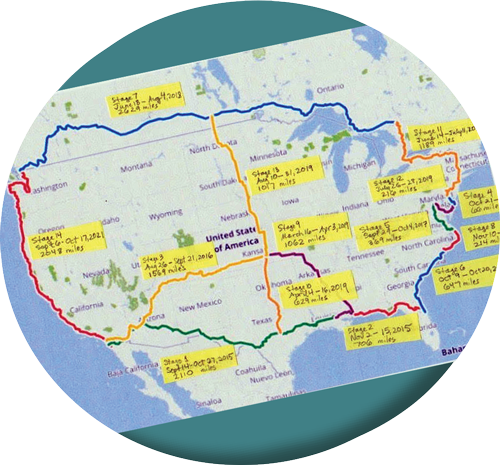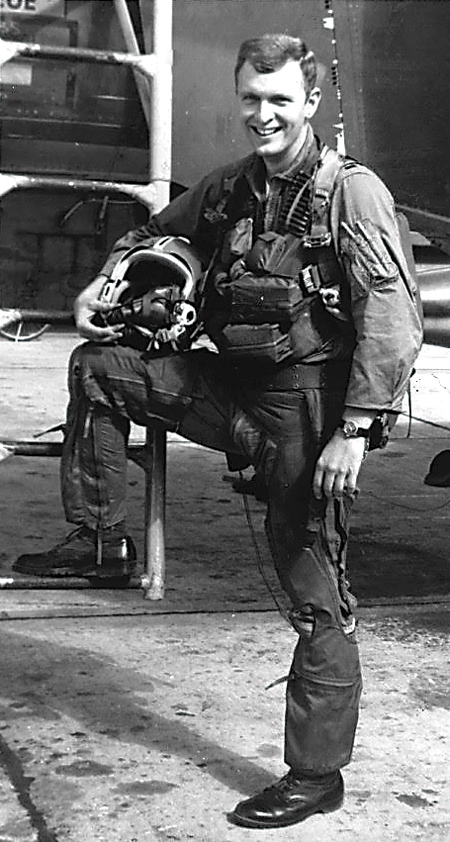
Two Wheels, One Goal: Peace
was straddling the back fender of my older brother John’s bike, my arms clinging to his waist. My face was buried in his back, my vision obscured.
I felt the ground detach from beneath us. I sensed that we were plummeting off a cliff. I panicked and clamped my legs together. My foot went into the spokes. The bike flipped and we lay splayed in the road, dazed.
The next thing I remember was our next-door neighbor, a heart surgeon, wrapping my sprained ankle. Sometimes I think about the fact that on that summer day in 1956, my courageous brother had already lived half his life.
A decade later, he was flailing for direction after graduating from the University of Maryland in 1965. Faced with being drafted, he opted instead to enlist in the Air Force to learn to fly.
In the meantime, I was spreading my wings at Swarthmore. From Collection in Clothier, to songs by the Beatles, to protests against the Vietnam War, I was marinating in a soup of peace. In the fall of 1969, John and his new wife, Donna, visited me at Swarthmore to tell me they had a baby on the way.
Then everything changed.
On Jan. 2, 1970, during winter break of my junior year, Air Force officers delivered the news to our family — John’s jet had been shot down. He was missing.
Caught in the riptide between an anti-war environment at college and my brother bombing targets in Vietnam, I was embarrassed and told no one at Swarthmore about our loss. My nephew was born on April 1, 1970, just three months after his father’s plane was shot down. When my junior year was over, I visited my sister-in-law with a sweater I had knitted with a peace sign on it for my adorable nephew. It was the first time I made a statement with a peace sign.
Despite the profound hole in our family, life went on. After graduation, I went to Italy to study art. Losing my brother taught me that life was too short not to follow a passion.
In a happy coincidence, I crossed paths with a S’more hallmate, Mazie Hough ’70, in Florence. Together, we explored southern Italy. During our carefree adventure, we hitched a ride on sailboat. Its firstmate was a charming lawyer named Giovanni. He eventually became my husband.
After our storybook meeting, we moved to the U.S. and life steadily became more conventional. We had two children and navigated ways to earn a living.
Signs of peace
- A ride from Wichita, Kan., the hub of the peace sign, to Biloxi, Miss., focused on civil rights sites.
- A ride from Austin, Texas, north to Wichita followed the Chisholm Trail.
- A ride on an Underground Railroad route from Cambridge, Md., to St. Catharine’s, Ontario, passed through Kennett Square, Pa., where classmates Gail and Dennis Newbold arranged a tour of Quaker abolitionist sites.
- I cycled from home to Bethany Beach, Del. This involved a ferry across the Chesapeake Bay. At the landing at Cornfield Harbor, a historical marker told the story of The Pearl. In 1848, 77 enslaved people boarded the The Pearl in an attempt to sail to freedom. It was one of the inspirations for Harriet Beecher Stowe to write Uncle Tom’s Cabin, instrumental in turning the tide against slavery.
- My final ride in 2019 was north to Canada from Wichita and passed through the International Peace Garden.

I needed a new project and thought about riding my bike across the United States. In the spring of 2015, I stumbled on a group that was doing just that. That September, we set off from San Diego. But before the first pedal stroke, I wondered if anyone my age (then 66) had done that. I contacted Guinness World Records, which responded with an email stating that if I’d do it at age 67, I could set a record.
When we cycled through Texas, I visited the National Museum of the Pacific War. After meandering through a section that told the compelling story of Admiral Chester W. Nimitz, I was lured through a lovely gateway. Plaques in memory of those who had lost their lives in World War II lined wall after wall. Each signified a gaping hole in a family — a missing sibling, parent, child, spouse — like our family had. And then I saw it — a large blank wall, space set aside for holes in future families. I felt like I had been punched in the gut.
The next year, I rode across the U.S. again and set my first Guinness record. I recall thinking that cycling for peace in honor of my brother John was my way of promoting peace. Maybe it would save a future family from ending up with a plaque on a memorial wall in place of their loved one.
In 2017, I’d been introduced to Strava, or GPS, art — pictures created with the tracks of bicycle rides. On a bike trip from home near Washington, D.C., to Florida, squatting on a mat on a church floor, I mapped out a peace sign sprawled across North America.
From that moment on, all my rides would contribute to an image of a peace sign and would include sites of peace or pivotal moments in progress towards it. A ride across Canada would create the northern arc of the peace sign. I’d visit a peace monument in each province and raise money for the Friends Service Committees that had been working for peace for over 100 years.
In 2018, halfway across Canada, in Ottawa, I met cyclists from Ukraine who were also cycling for peace. Near the end of the ride, I pedaled to Thinkers Lodge in Pugwash, Nova Scotia. While most of the monuments I visited turned out to be peace monuments in name and war memorials in fact, Pugwash was a place where peace was created.
In 1957, industrialist John Eaton convened scientists worldwide at his home, where they unanimously agreed that nuclear weapons should be eliminated. For their work, the Pugwash Conferences on Science and World Affairs were awarded the 1995 Nobel Peace Prize.

On the second day of the ride, we pedaled to Everett United Church of Christ, where my brother John and his wife Donna were married. There, his sister-in-law graciously transferred his wedding ring to me. I placed it on a ribbon to wear around my neck. On Oct. 4, we cycled across the fogged-in Golden Gate Bridge into San Francisco to the second site that was truly about the creation of peace. We stood on the stage of Veterans Auditorium, where the United Nations Charter was signed on June 26, 1945. The following day, I took a train to Palo Alto to meet classmate Shelley Fisher Fishkin ’71, a professor at Stanford and expert on Mark Twain. She asked about the purpose of my ride and as I explained the theme of peace, her eyes went wide. She asked if I knew Mark Twain’s “The War Prayer”. A scathing anti-war poem that turns the reader’s focus to the people on the side that loses, Twain wrote it in 1905. But because it was so controversial then, he chose to delay publishing it until after his death.
The day we cycled south out of San Francisco, I met one more Swarthmorean — Ollie Mayer ’39. At the top of a significant climb along a stunning stretch of coastline, there she was on a historical marker. She had successfully urged that a tunnel be drilled for Highway 1 in order to preserve the coastline’s integrity. It is because of Mayer that I enjoyed magnificent views of the Pacific Ocean at Devil’s Slide.
On Oct. 17, I rode the final miles to complete the continent-sized peace sign, tears flowing. Bearing one circle, my brother’s wedding ring, I closed another one.